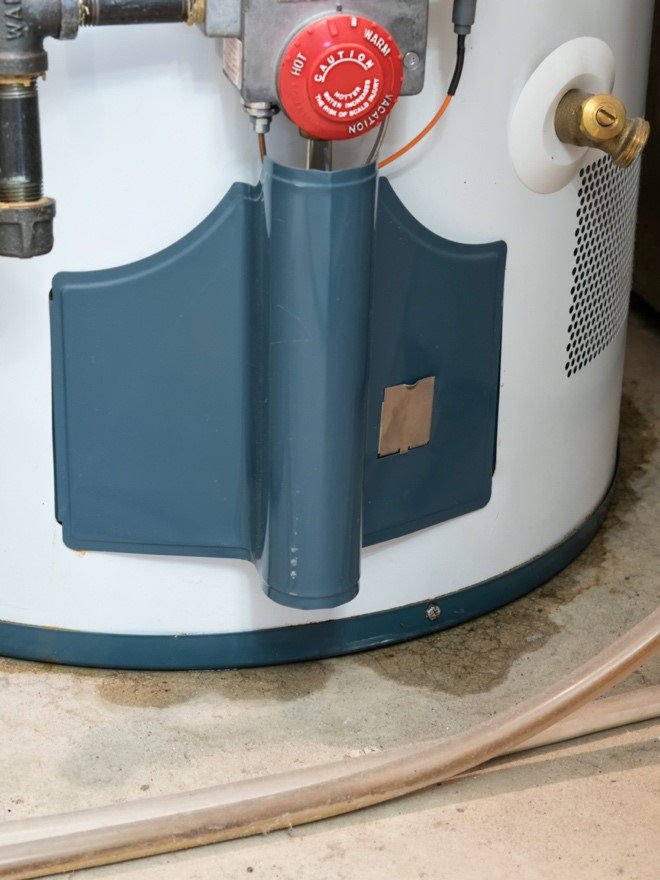Over time, builders have tightened and improved the construction of new homes to conserve energy and maintain warmth. Windows and doors are more efficient, and air sealing has reduced random sources of air infiltration to almost nothing. As a result, it is harder for our homes to breathe. A fresh air vent helps solve this issue by channeling fresh outdoor air to specific areas of the home. The professional home inspectors at HomePro Inspections want you to know that the more you do to help your homes breathe, the healthier the air is for you.
Gas-burning appliances such as furnaces, water heaters, fireplaces, stoves, ovens, and clothes dryers need a continuous supply of oxygen. Some people may argue that having a vent that brings cold air into their home during the frigid dead of winter is unnecessary, but this vent is actually supplying the home with the combustible oxygen it needs to create a safer and healthier indoor environment.
How do fresh air vents work?
When explaining fresh air vents to my home inspection clients, I use an example from my childhood in a 1950s vintage rambler home. Back then, we sat on the hardwood floor in the living room to watch the old black-and-white TV. When the furnace kicked on in the utility room, you could feel the cold air move along the floor from under the front door to the cold air return across the room.
Fresh air vents facilitate the ventilation of homes and gas appliances by directing airflow to areas of the house that require it most. They are usually located in the utility or mechanical room where there’s a furnace, water heater, and possibly a gas dryer. They supply the air for proper combustion and prevent backdrafting and carbon monoxide buildup.
What is backdrafting, and how does it occur?
For example, if someone is cooking and running the exhaust vent in the kitchen while the exhaust vents in two of the three bathrooms are in use and the clothes dryer is running, all of these appliances draw air from within your home and vent it outside. Now, if the old water heater kicks on and has a standard atmospheric vent, the exhaust naturally rises up and out of the vent through the roof. When a combustible appliance, such as a water heater or a furnace, draws its exhaust back into your home instead of naturally venting out of the roof, this phenomenon is known as backdrafting.
Why fresh air vents are important.
The gas appliances in your home use oxygen as part of the combustion process. Without a source of fresh outdoor air from a vent intake, they would consume the available oxygen, which is highly problematic. This would reduce the available oxygen supply for the home's occupants and potentially lead to an unhealthy accumulation of carbon monoxide. A fresh air vent provides the necessary replacement combustion air for your appliances to operate correctly and the occupants of your home to live safely.
How to identify a fresh air vent.
Our home inspectors confirm the presence of a fresh air vent during a home inspection. This vent is typically located in the utility room, next to the furnace and water heater. The utility room often also contains a clothes dryer and a washing machine.
A fresh air vent in a utility room
The fresh air vent will be a 6- to 8-inch duct that extends down to the floor, typically with a loop at the bottom, resembling the letter “J.” This duct may extend through the home and into the attic or to a wall vent. Extending the vent to the attic prevents wind from directly blowing into the vent.
A fresh air vent in an attic
What about the cold air?
Occasionally, we find rags, towels, or foam balls stuck in the utility room's fresh air vents during a home inspection. Homeowners who do not understand the purpose of these vents think they are doing the right thing by blocking the cold air entering the home. Our home inspectors will explain the reasons for the vent and why the cold air is necessary.
Summary
It is essential to have clean air in your home for breathing. Outside fresh air replaces the expelled dirty air. Remember, don’t block that vent; ensure it is clear to allow air to flow into your home.
At HomePro Inspections, our home inspectors are trained to inspect your HVAC systems and identify defects. Any issues are documented in your home inspection report and recommended for resolution by a qualified professional.
Visit our website or schedule your home inspection in the Rochester, Owatonna, and Faribault, MN, areas. You can also contact us today at (507) 202-8942, send us an email, or use our online “Schedule Now” feature to schedule an appointment.












































